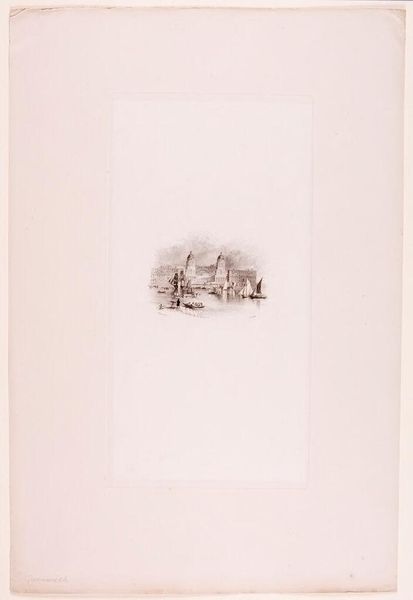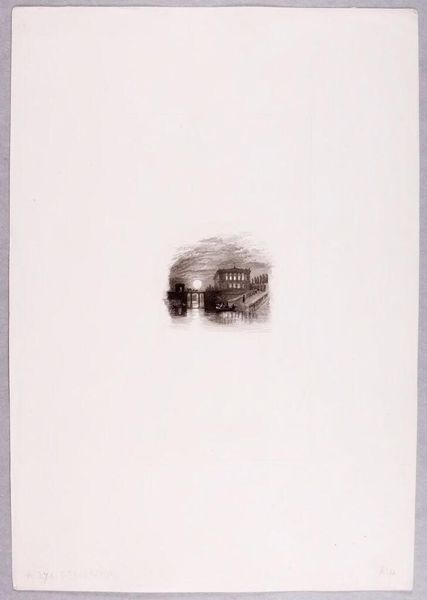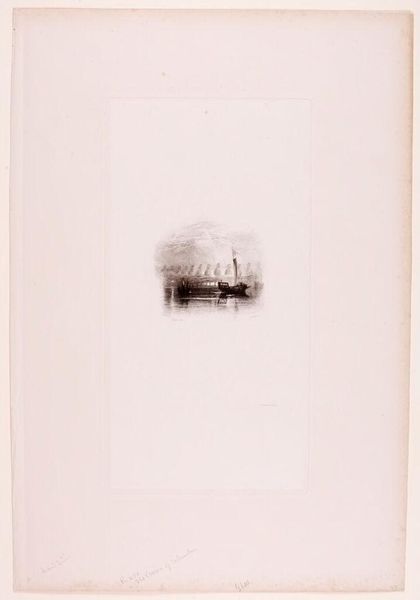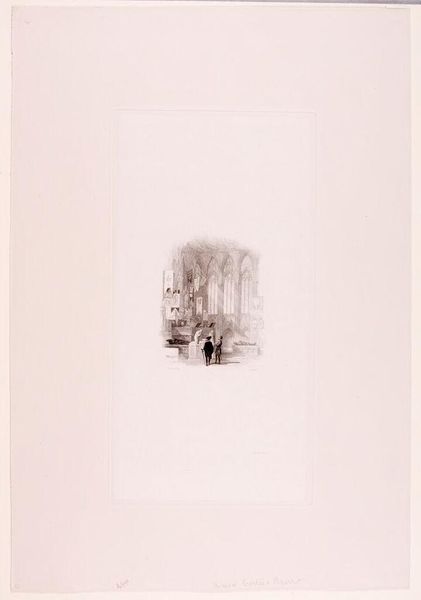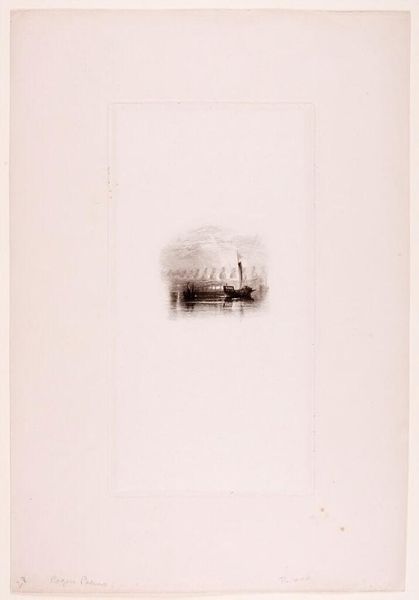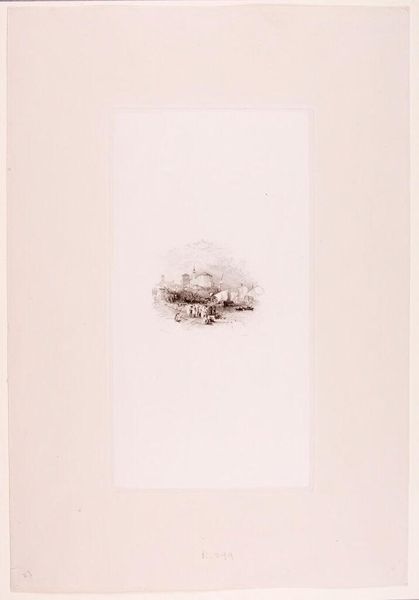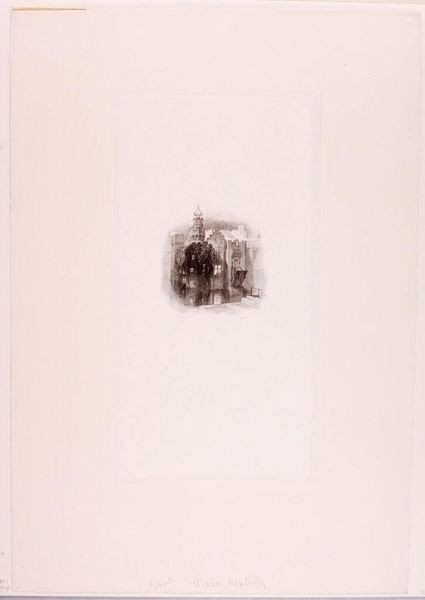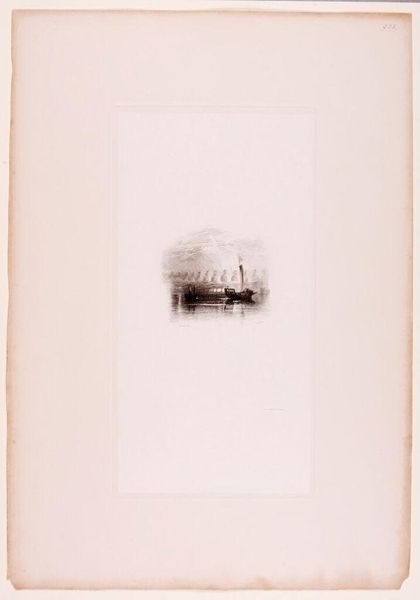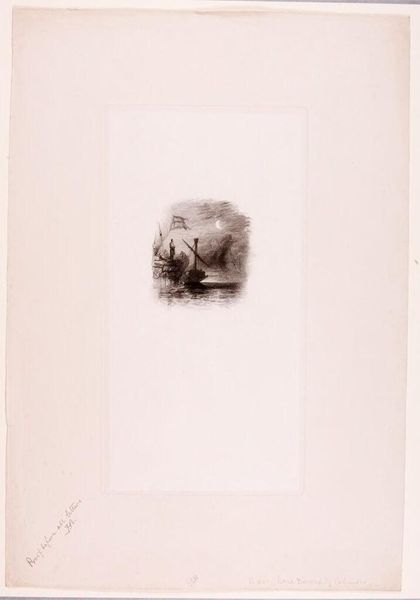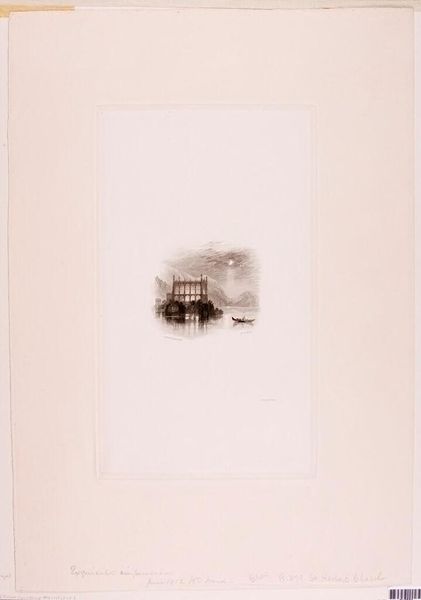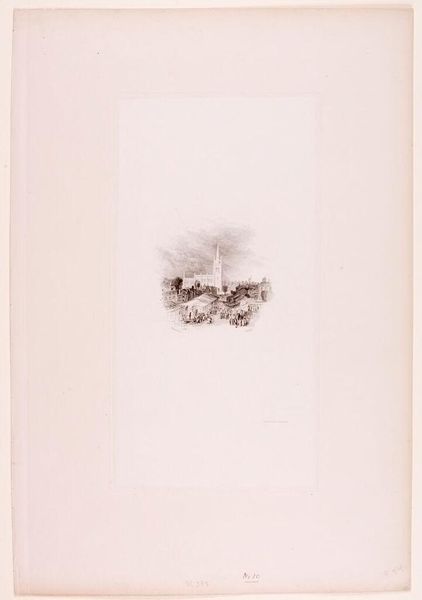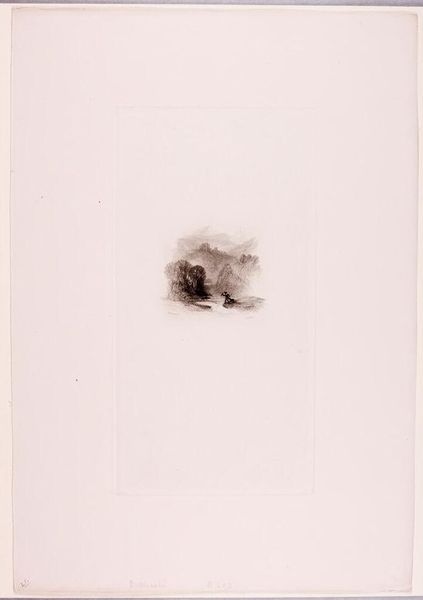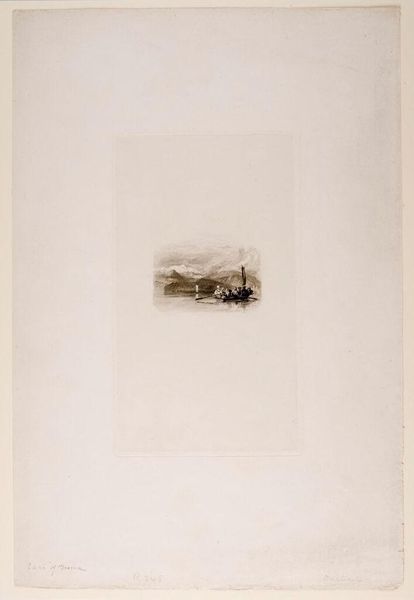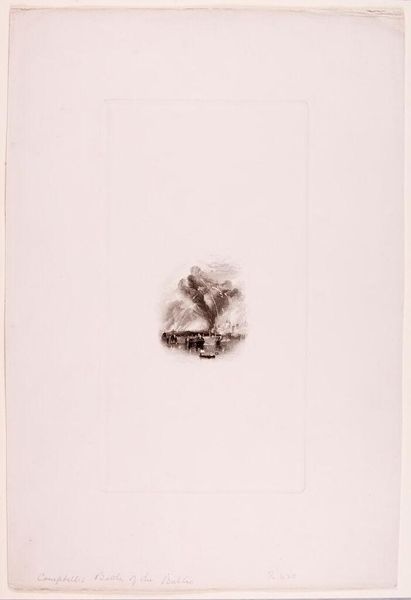
Copyright: CC0 1.0
Curator: "The Vision of Columbus," by Edward Goodall, presents a hazy waterscape dominated by a central ship. The lack of precise dating information invites speculation about its historical context. Editor: My immediate impression is one of unease, actually. Despite the seeming tranquility, the limited visibility creates a sense of foreboding. The ship appears isolated, perhaps lost. Curator: Isolation is an interesting point. The symbolism of a solitary ship can suggest exploration, yes, but it can also echo themes of vulnerability and the individual against the vastness of fate or nature. Editor: Considering Columbus' legacy, one can't ignore the implications of colonization and displacement, can we? The “vision” becomes problematic when we acknowledge the violence it enabled. Curator: Indeed. By understanding how symbols such as ships or the sea carry cultural weight, we can re-evaluate the emotional and psychological impact of Goodall's image. Editor: And how such images were used, and continue to be used, to perpetuate harmful narratives. It forces us to ask: whose vision are we actually seeing? Curator: Precisely, it's a valuable reminder that historical art can be a lens through which we critically examine our present. Editor: Absolutely, art history should be in constant dialogue with contemporary theory. The stakes are too high for anything less.
Comments
No comments
Be the first to comment and join the conversation on the ultimate creative platform.
